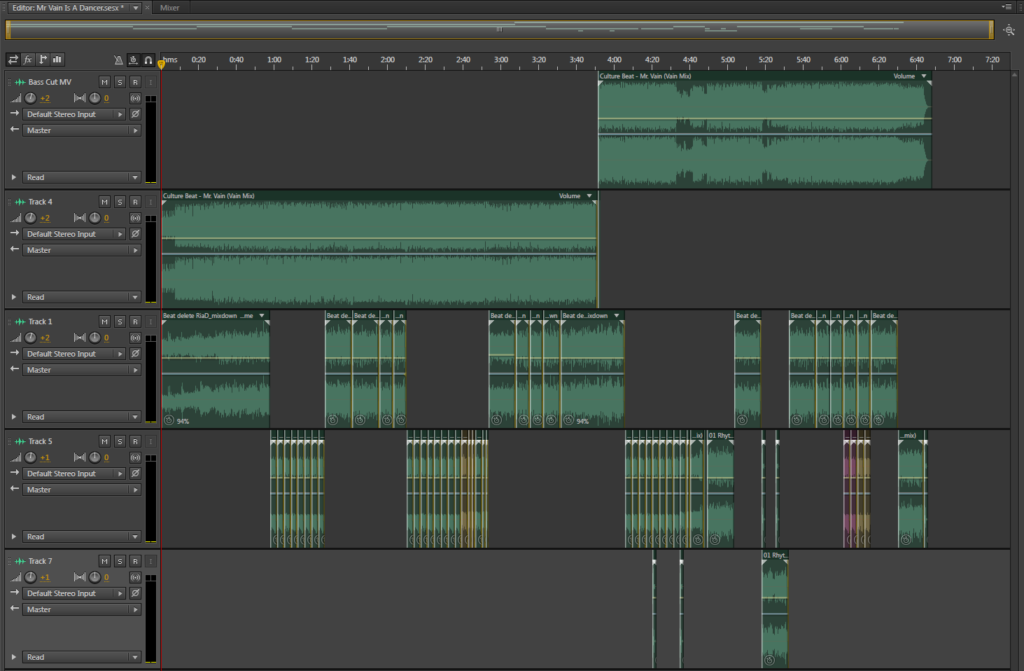I wanted to title this post “There’s nothing worth doing that isn’t worth doing again after someone else has done a crappy job of it”, but I realized that was shockingly uncharitable. Many people have mashed these two songs together. It seems like a right of passage for aspiring mashup DJs. YouTube is rife with examples. So I’m not exactly breaking ground here. But this was an exercise worth posting for two reasons:
- It really is a great combination and I’m pleased with the results.
- I used wave inversion to good effect and I feel like that’s worth documenting.
Culture Beat vs Snap! “Mr. Vain is a Dancer” (Download)
As for #1, that’s pretty self-explanatory. It’s a good mix, the songs are basically the same in structure, and I feel like I brought them together in a harmony that’s lacking from most of what I’ve been able to find on YouTube and elsewhere.
As for #2? That’s the fun bit. What’s wave inversion, how did I use it, and so what?
Wave inversion is simple: If you take a wave file, invert it, then mix it with itself, it cancels itself out and the result is silence. This is how many people can create high quality acapellas. They take an instrumental version of a song, invert the wave, then mix it with the vocal version of the song. The result is that the difference between the instrumental and vocal versions remains: just the vocals. Now, this technique only works if both files are from the same source quality, preferably CD/FLAC/AAC lossless quality. There are many variables that factor into whether or not this works, but that’s the basic gist.
I’ve been aware of this technique for some time, and have used it to some minor success with certain projects. What’s so different about this project then? Simple. I used a subset of a sample to delete a specific sound, rather than using a full-range sample to delete multiple instruments. By using the frequency lasso tool in Audition, I was able to select the kick drum sound from Rhythm Is A Dancer. I then copied that selection to a new file, inverted it, then applied it to every instance of a kick drum that I wanted to delete.
It was tedious. First I would copy the inverted sample near a kick sound I wanted to remove. Then I’d try to align the samples based on the waveform. Listen to the single kick. Nudge the sample. Listen again. Move on or keep nudging. Some kicks were easy. Some were recalcitrant. It just took a ton of time to get everything aligned, though honestly not as much as I was expecting when I started my experiment. Eventually, I had all the samples I needed with the kick essentially deleted.
I wanted the kick from Mr Vain to be the only kick in the resulting mix. Layering kicks over kicks just creates a spike in the waveform. Trying to filter out the bass frequencies of the kick just affects other areas of the track that I wanted to leave intact. Removing the kick, and only the kick, was the best course and it worked beautifully.
Anyways, it was a fun learning experience, and I feel like it’s a useful technique I will start applying to other projects as they arise. I may even go back to older projects and see if it’s something I can use to clean them up. For now, I hope you enjoy my take on this popular mashup.
